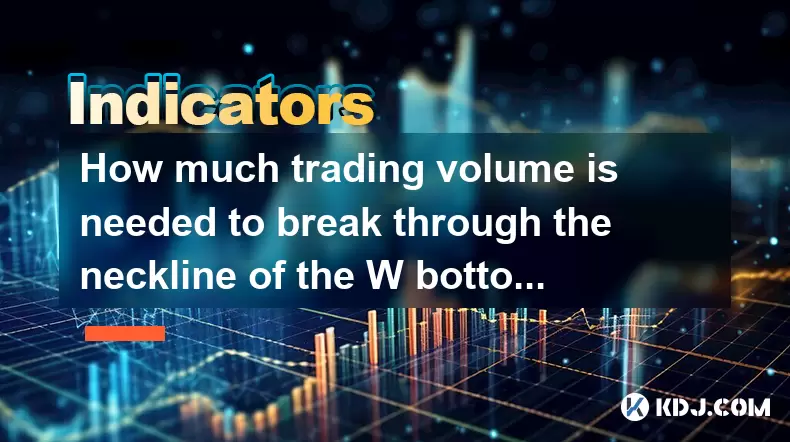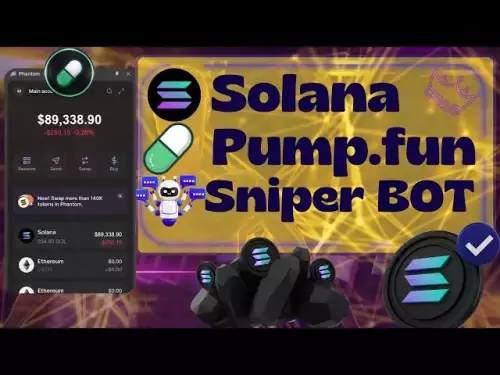-
 Bitcoin
Bitcoin $115100
-1.30% -
 Ethereum
Ethereum $4758
-1.70% -
 XRP
XRP $3.027
-2.19% -
 Tether USDt
Tether USDt $0.9998
-0.01% -
 BNB
BNB $883.2
-1.42% -
 Solana
Solana $204.0
2.62% -
 USDC
USDC $1.000
0.02% -
 Dogecoin
Dogecoin $0.2371
-0.97% -
 TRON
TRON $0.3612
-1.24% -
 Cardano
Cardano $0.9128
-2.19% -
 Chainlink
Chainlink $26.13
-3.93% -
 Hyperliquid
Hyperliquid $44.73
0.90% -
 Sui
Sui $3.715
-0.56% -
 Stellar
Stellar $0.4153
-2.41% -
 Ethena USDe
Ethena USDe $1.000
-0.04% -
 Bitcoin Cash
Bitcoin Cash $588.9
-2.06% -
 Avalanche
Avalanche $25.91
3.27% -
 Hedera
Hedera $0.2525
-1.45% -
 Litecoin
Litecoin $120.9
-1.35% -
 UNUS SED LEO
UNUS SED LEO $9.607
0.30% -
 Toncoin
Toncoin $3.382
-0.31% -
 Shiba Inu
Shiba Inu $0.00001329
-0.38% -
 Uniswap
Uniswap $11.38
-1.67% -
 Polkadot
Polkadot $4.222
2.83% -
 Aave
Aave $354.5
4.93% -
 Dai
Dai $0.0000
0.00% -
 Bitget Token
Bitget Token $4.704
-1.49% -
 Cronos
Cronos $0.1565
1.83% -
 Ethena
Ethena $0.7463
1.55% -
 Monero
Monero $265.8
-0.39%
How much trading volume is needed to break through the neckline of the W bottom pattern?
A W bottom breakout is confirmed when price closes above the neckline with volume at least 20%-50% above average, signaling strong buyer conviction.
Aug 13, 2025 at 11:36 am

Understanding the W Bottom Pattern in Cryptocurrency Trading
The W bottom pattern is a widely recognized reversal formation in technical analysis, particularly within the cryptocurrency market. It typically emerges after a downtrend and signals a potential shift to an uptrend. The pattern consists of two distinct lows that are roughly equal, separated by a moderate peak, forming a shape resembling the letter "W". The neckline is drawn by connecting the highest point between the two lows. A confirmed breakout occurs when the price moves above this neckline with substantial conviction. While the shape and structure are critical, the trading volume during the formation and breakout plays a pivotal role in validating the signal.
The Role of Volume in Confirming the W Bottom Breakout
Volume acts as a confirmation tool in technical patterns, and the W bottom is no exception. During the formation of the first low, volume tends to be high as selling pressure exhausts itself. As the price rebounds to form the intermediate peak, volume usually decreases, indicating reduced selling momentum. The second low often forms with lower volume compared to the first, suggesting that bears are losing control. The most crucial volume signal comes during the breakout above the neckline. For the breakout to be considered valid, there must be a noticeable increase in trading volume. This surge confirms that buyers are entering the market aggressively, supporting the likelihood of a sustained upward move.
Quantifying the Required Volume for a Valid Breakout
There is no fixed numerical value for the volume required to break the neckline of a W bottom, as it depends on the asset, timeframe, and market conditions. However, traders generally look for volume that is at least 20% to 50% higher than the average volume observed during the formation of the pattern. For instance, if the average daily trading volume during the W bottom formation is 1,000 BTC, a breakout day with volume exceeding 1,200 to 1,500 BTC would be considered strong confirmation. In highly volatile cryptocurrencies like Solana (SOL) or Dogecoin (DOGE), even higher volume spikes may be necessary due to their inherent price swings and speculative nature.
- Monitor the average volume over the duration of the pattern’s formation
- Compare breakout day volume to this average
- Look for a volume spike that clearly exceeds typical levels
- Use volume indicators such as On-Balance Volume (OBV) or Volume Weighted Average Price (VWAP) to reinforce analysis
How to Use Volume Indicators to Validate the Breakout
Traders can use built-in volume tools on platforms like TradingView or Binance to assess breakout strength. The Volume Oscillator helps visualize the difference between current volume and a moving average of past volume. A positive spike above zero during the breakout indicates strong buying interest. Another effective method is comparing the breakout candle’s volume to the previous 5–10 candles. The breakout should ideally have the highest volume in that sequence. Additionally, accumulation/distribution line analysis can show whether large players are accumulating the asset before the breakout, adding credibility to the move.
- Open your preferred charting platform and enable the volume histogram
- Apply a 10-period simple moving average (SMA) to the volume bars
- Observe whether the breakout candle’s volume bar extends significantly above the SMA
- Cross-verify with price action—the breakout should close decisively above the neckline
- Avoid false breakouts where price briefly exceeds the neckline but volume remains flat or declines
Common Pitfalls and How to Avoid Them
Many traders mistake a minor price move above the neckline as a valid breakout, especially when volume is weak. This often leads to false breakouts or traps set by market makers. To avoid this, wait for the price to close above the neckline on a high-volume candle, preferably on a daily or 4-hour timeframe for more reliability. Another mistake is ignoring the broader market context. For example, a W bottom forming in Bitcoin (BTC) may carry more weight if the overall crypto market is stabilizing after a correction. Conversely, a breakout in a low-cap altcoin during a bearish market may lack sustainability even with high volume.
- Do not act on intraday wicks that briefly cross the neckline
- Confirm with multiple timeframes—check if the 4-hour and daily charts align
- Watch for retests of the neckline after breakout; volume should remain supportive
- Be cautious of breakouts occurring during low-liquidity periods, such as weekends
Practical Steps to Trade a W Bottom Breakout with Volume Confirmation
Executing a trade based on a W bottom requires a structured approach. Begin by identifying the pattern on a price chart. Once the second low forms and price begins to rise toward the neckline, prepare for a potential breakout. Use the following checklist:
- Draw the neckline accurately by connecting the swing high between the two lows
- Enable volume indicators on your chart
- Wait for price to approach the neckline with increasing momentum
- Require the breakout candle to close above the neckline
- Ensure the volume on the breakout candle is significantly higher than recent averages
- Enter a long position after confirmation, placing a stop-loss just below the second low
- Use a risk-reward ratio of at least 1:2, targeting a move equal to the depth of the W pattern projected upward from the breakout point
Frequently Asked Questions
Can a W bottom breakout be valid with low volume?
No, a breakout with low volume lacks confirmation from market participants. Even if the price moves above the neckline, low volume suggests weak buying interest, increasing the risk of a false breakout or reversal.
How long should the W bottom pattern take to form for the volume breakout to be meaningful?
There is no fixed duration, but patterns forming over several weeks on the daily chart tend to carry more significance than those on shorter timeframes. The volume surge at breakout remains critical regardless of formation length.
Should I use leverage when trading a high-volume W bottom breakout?
Leverage increases both potential gains and risks. Given the volatility of cryptocurrencies, it is advisable to use conservative leverage or trade with spot positions, especially when confirming volume patterns.
What if the price breaks the neckline but volume only increases slightly?
A slight volume increase is insufficient for confirmation. This scenario often leads to price retracing back below the neckline. Wait for clearer volume evidence before entering a position.
Disclaimer:info@kdj.com
The information provided is not trading advice. kdj.com does not assume any responsibility for any investments made based on the information provided in this article. Cryptocurrencies are highly volatile and it is highly recommended that you invest with caution after thorough research!
If you believe that the content used on this website infringes your copyright, please contact us immediately (info@kdj.com) and we will delete it promptly.
- XYZVerse, Shiba Inu, and the 2025 Bull Cycle: A Meme Coin Evolution
- 2025-08-24 13:05:12
- WLFI Token, BingX, and the Trading Landscape: A New York Perspective
- 2025-08-24 12:45:20
- Aave, Governance, Allocation: Navigating DeFi's Shifting Sands
- 2025-08-24 12:45:20
- Crypto Coins in 2025: Meme Coins, Undervalued Blockchains, and Bull Run Predictions
- 2025-08-24 13:05:12
- Fed Pivot Ignites Crypto Rally: Altcoins Set to Outperform?
- 2025-08-24 13:25:12
- Eric Trump, Tokyo, and Metaplanet: A Bitcoin Bonanza?
- 2025-08-24 11:05:13
Related knowledge

What does it mean when the +DI and -DI cross frequently in the DMI indicator but the ADX is flattening?
Aug 11,2025 at 03:15am
Understanding the DMI Indicator ComponentsThe Directional Movement Index (DMI) is a technical analysis tool composed of three lines: the +DI (Positive...

What does the sudden appearance of a "dark cloud cover" candlestick pattern during an uptrend indicate?
Aug 13,2025 at 11:35am
Understanding the 'Dark Cloud Cover' Candlestick PatternThe dark cloud cover is a bearish reversal pattern in technical analysis that typically appear...

What does it mean when the moving average, MACD, and RSI all send buy signals simultaneously?
Aug 11,2025 at 01:42pm
Understanding the Convergence of Technical IndicatorsWhen the moving average, MACD, and RSI all generate buy signals at the same time, traders interpr...

What does it mean when both the KDJ indicator and the RSI show overbought signals simultaneously?
Aug 13,2025 at 11:35am
Understanding the KDJ Indicator in Cryptocurrency TradingThe KDJ indicator is a momentum oscillator derived from the Stochastic Oscillator, widely use...

What does it mean when the price is trading above the SAR indicator but the red dots are densely packed?
Aug 09,2025 at 11:49pm
Understanding the SAR Indicator and Its Visual SignalsThe SAR (Parabolic Stop and Reverse) indicator is a technical analysis tool used primarily to de...

What does it mean when the candlestick chart forms a "Morning Star" but trading volume is sluggish?
Aug 12,2025 at 06:28pm
Understanding the Morning Star Candlestick PatternThe Morning Star is a three-candle bullish reversal pattern commonly observed in cryptocurrency pric...

What does it mean when the +DI and -DI cross frequently in the DMI indicator but the ADX is flattening?
Aug 11,2025 at 03:15am
Understanding the DMI Indicator ComponentsThe Directional Movement Index (DMI) is a technical analysis tool composed of three lines: the +DI (Positive...

What does the sudden appearance of a "dark cloud cover" candlestick pattern during an uptrend indicate?
Aug 13,2025 at 11:35am
Understanding the 'Dark Cloud Cover' Candlestick PatternThe dark cloud cover is a bearish reversal pattern in technical analysis that typically appear...

What does it mean when the moving average, MACD, and RSI all send buy signals simultaneously?
Aug 11,2025 at 01:42pm
Understanding the Convergence of Technical IndicatorsWhen the moving average, MACD, and RSI all generate buy signals at the same time, traders interpr...

What does it mean when both the KDJ indicator and the RSI show overbought signals simultaneously?
Aug 13,2025 at 11:35am
Understanding the KDJ Indicator in Cryptocurrency TradingThe KDJ indicator is a momentum oscillator derived from the Stochastic Oscillator, widely use...

What does it mean when the price is trading above the SAR indicator but the red dots are densely packed?
Aug 09,2025 at 11:49pm
Understanding the SAR Indicator and Its Visual SignalsThe SAR (Parabolic Stop and Reverse) indicator is a technical analysis tool used primarily to de...

What does it mean when the candlestick chart forms a "Morning Star" but trading volume is sluggish?
Aug 12,2025 at 06:28pm
Understanding the Morning Star Candlestick PatternThe Morning Star is a three-candle bullish reversal pattern commonly observed in cryptocurrency pric...
See all articles

























































































